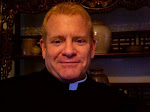The Hard-to-Swallow
Bits
Fr. Tony’s Midweek
Message
May 1, 2019
Jean Piaget, the
great developmental psychologist of the mid-20th century, focused
most of his work on how complex adult thinking and reasoning grows from the
simpler more naïve thought processes of children. One of the
progressions in reasoning he noted early on involved children having problems
estimating and comparing volumes of which glass held more water. Children
younger than six or so had problems estimating basic spatial relationships: when
they saw a normal tumbler filled with water emptied in its entirety into a tall
skinny Champagne flute, they usually would say that a tall skinny glass held
more than the tumbler, though no additional water was added, because, as they
all eagerly pointed out, “the water is higher, and that means more.” He
discovered that it was pointless for adults to explain the logic correcting the
children’s error (“It’s the same water with nothing added or taken away, so it
must be the same amount, regardless of the shape of the
glass.”) The kids could not see the point until their
reasoning and cognitive skills had developed to a more advanced stage, and they
had discovered intuitively the principle of the conservation of volume by
playing with water and glasses on their own.
We all are hostages
to our own limits in perception and reasoning. We all have
blind spots, to which, by definition, we are blind. As Donald
Rumsfeld put it, “there are things we know, things we don’t know and know we
don’t know, and things we don’t know we don’t know.” Further
experience and growth might mean that light is shed on such blind spots, or
maybe not.
Imagine a world
existing in only two dimensions: length and width. Beings
living in such a world could see things only through these two
dimensions. A sphere crossing such a world would be seen by
its flat-land inhabitants as first a point, then a circle that gradually grows
and then shrinks until it is a point again and then
disappears. A cube crossing the plane of the flat-land would
appear as a square only and then disappear. No amount of
reasoning or mathematical modeling would change the flatlanders’ inability to
perceive volume and depth.
Most religious
traditions have always asserted that our world is like
that: we see only limited aspects of the truth, and are unable
to escape our own perceptual limitations. The spirituality of
contemplation and the discipline of careful reasoning and scholarship seek to
break through the blind spots. And in this, one of the most
important solvents of our limitations are the things that seem totally
unpredicted and unreasonable in our lives, the things that our normal
perceptions and reasoning cannot account for.
For Christians, the
story of the resurrection of Jesus is a central narrative that serves as a
solvent of seeing the world through the eyes of the senses
only. The story should bother us: it is
unprecedented and not-to-be repeated. It goes against everything we
think we know about the world. Even this story’s details
evolved and grew in the telling, and this makes many of us doubt how helpful the
story can be in breaking down our misperceptions of life and death.
It is the hard bits,
those most difficult to swallow, that hold the greatest power in breaking down
our limited view. But for that to happen, we need to patiently
grow and develop new doors of perception, and spend time “playing with the water
glasses.” This in practical terms means hearing the stories again and again,
living out their truth in the small ways we are capable
of. This is what Church is all about.
Grace and
peace.
Fr. Tony +













No comments:
Post a Comment